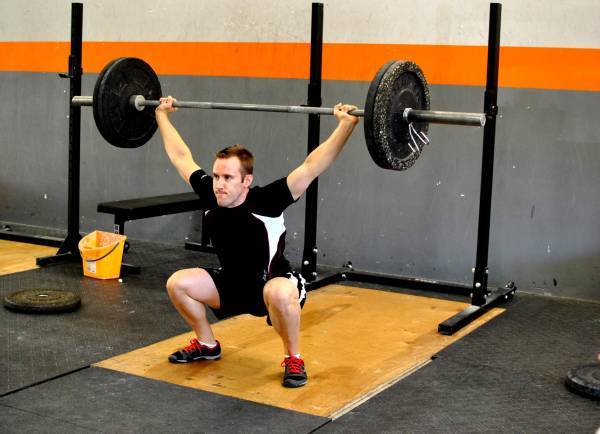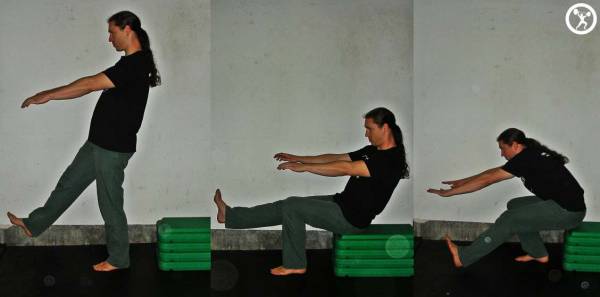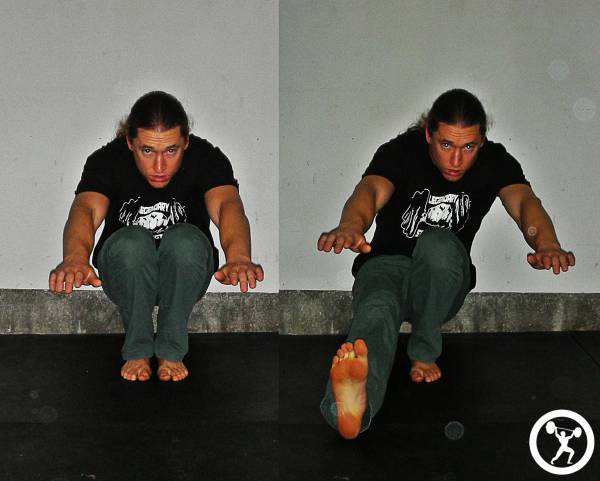Squat. It’s like a magic word. Add the word “squat” to any workout and you will feel an immediate sense of accomplishment, even before you actually do one.
Squat. It’s like a magic word. Add the word “squat” to any workout and you will feel an immediate sense of accomplishment, even before you actually do one.
What I love about squats is their versatility. There’s a squat for almost every occasion and purpose. Here are five squat variations that demonstrate what I mean.
1. Work on Movement Basics With Bodyweight Squats
You’ve done a lot of these, I’m sure. Bodyweight squats make excellent additions to at-home workouts, and though they might not seem like the most challenging option, there’s a lot you can do with them.
But like all bodyweight exercises, there’s also a lot that can go wrong. Watch this oldie-but-a-goodie video by coach Traver Boehm for some tips on perfecting your bodyweight squat form:
And in case you’re bored with the humble bodyweight squat, parkour expert Ben Musholt has four variations to keep you on your toes.
2. Build Up to Big Lifts With Overhead Squats
From the simplest version we go to one of the more infamous varieties. Pat McCarty nailed it when he said, “The overhead squat is a punk.” In fact, that’s the title of one of his articles. Pat pointed out the overhead squat is helpful for anyone working on their snatch:
You need a strong overhead squat for one reason – to complete the snatch. Although we use it in CrossFit workouts all the time, in reality, the overhead squat is simply one of the elements of a properly executed snatch. In order to snatch heavier weight, you need to be comfortable coming out of the hole with a lot of weight over your head. So we train the overhead squat in both CrossFit and weightlifting.
Pat’s article is full of great advice from squatting veterans Tamara Reynolds, Samantha Tollman, Lori Rico, and Stephen Flamm. McCarty summarized a point made by Stephen Flamm that stuck for me, too:
Stephen talked about hanging out in the bottom of the squat. This is a great way to get comfortable with what ultimate is the most uncomfortable part of the overhead squat. In fact, you can take a bar and work up to a moderate weight, drop down into the squat and then stay down there and check a few things. Are you pulling the bar apart? Rotating your elbows and showing your armpits? Knees out? See what you can do so invoke a few of these cues and right get solid down there.

3. Impress People at Parties With Pistol Squats
Pistols are an impressive feat that will make you stand out at any social gathering (or gym, for that matter). I can’t think of many other exercises that combine strength, flexibility, and balance in the same way pistols do. For me, they’re still a work in progress. If you’re in the same boat, give these drills from coach Logan Christopher a try:
Drill 1: One-Legged Box Squats

This is the method I personally used to achieve my first pistol. Put a high box behind you, squat down and back until your butt touches it, then stand back up. This is the touch-and-go method. You can also unload by sitting on the box and rocking back and forth. This will generate momentum to help you stand up. This little assist will help you to go down a little further and be able to come back up.
Mix up both methods in your training for the best results. As you improve over time, lower the height of the box until you can get rid of it entirely – squatting all the way down, thigh to calve.
Drill 2: Feet-Together or Close Squats

In the feet-together squat, you’ll do a two-legged squat, but move the feet closer to the body and leg position needed for the pistol. You can do this by narrowing your stance until your feet are touching. In the beginning, you may just be able to move your feet a couple inches closer than your normal squat width and still be able to descend to rock bottom. But eventually, you’ll want to get the feet together.
4. Improve Mobility With Goblet Squats
Goblet squats are a great alternative for beginners who aren’t quite ready to work with a barbell. I also love to do them while traveling since it’s easy to haul a kettlebell around. But first and foremost, goblet squats provide a helpful measure of mobility.
In his article, How to Do the Perfect Goblet Squat, coach Andrew Read outlined the benefits of the goblet squat and some important differences between it and other versions:
The goblet squat is primarily a mobility exercise and we use it to reinforce the movement pattern before we add more load. One of Pavel’s magic “three S’s” for mobility is to “create space.” If we want to be more mobile we need to create space. That means we need to push the knees out to make that space. This helps the knees track the toes, but the main point is that we’re trying to sit our hips into the space between our feet.
As you squat down I want you to think about putting the point of your elbows into your vastus medialis – the teardrop shaped muscles on the insides of your knees. When you’re in that position – feet flat on the ground, elbows inside knees, and knees pushed out to make space and tracking over your feet – I want you to use your elbows against your knees as a fulcrum to pull your chest up and forward and really get your spine flat. Thinking about using this fulcrum to rotate the entire body so that it is more vertical and your hips are more in line with your feet than behind them is goo, too. The bottom body position should more resemble the overhead squat than a box squat.
5. Increase Hip Flexibility With Cossack Squats
Cossack squats are underrated. If you want to increase hip flexibility, start here. They’re also one of my favorite exercises to do after sitting at a desk for a long time. Give it a shot. Your adductors will say, “Ahhhh.”
Coach Logan Christopher provided an excellent video demonstration of the Cossack squat in his article, Cossack Squat Variations for Improved Strength and Flexibility.
Movement, strength, mobility, and flexibility – these squat variations have you covered. Oh, and party tricks, can’t forget those.
Of course, there are a lot of squat variations missing from this list. What are some of your favorites? Share in the comments below!
More Like This:
- When in Doubt, Do Front Squats
- How Deep Should You Squat?
- Why You Should Vary Your Back Squat Stance
- What’s New on Breaking Muscle Today
Photo 1 courtesy of Jorge Huerta Photography.
Photo 2 courtesy of CrossFit Impulse.






